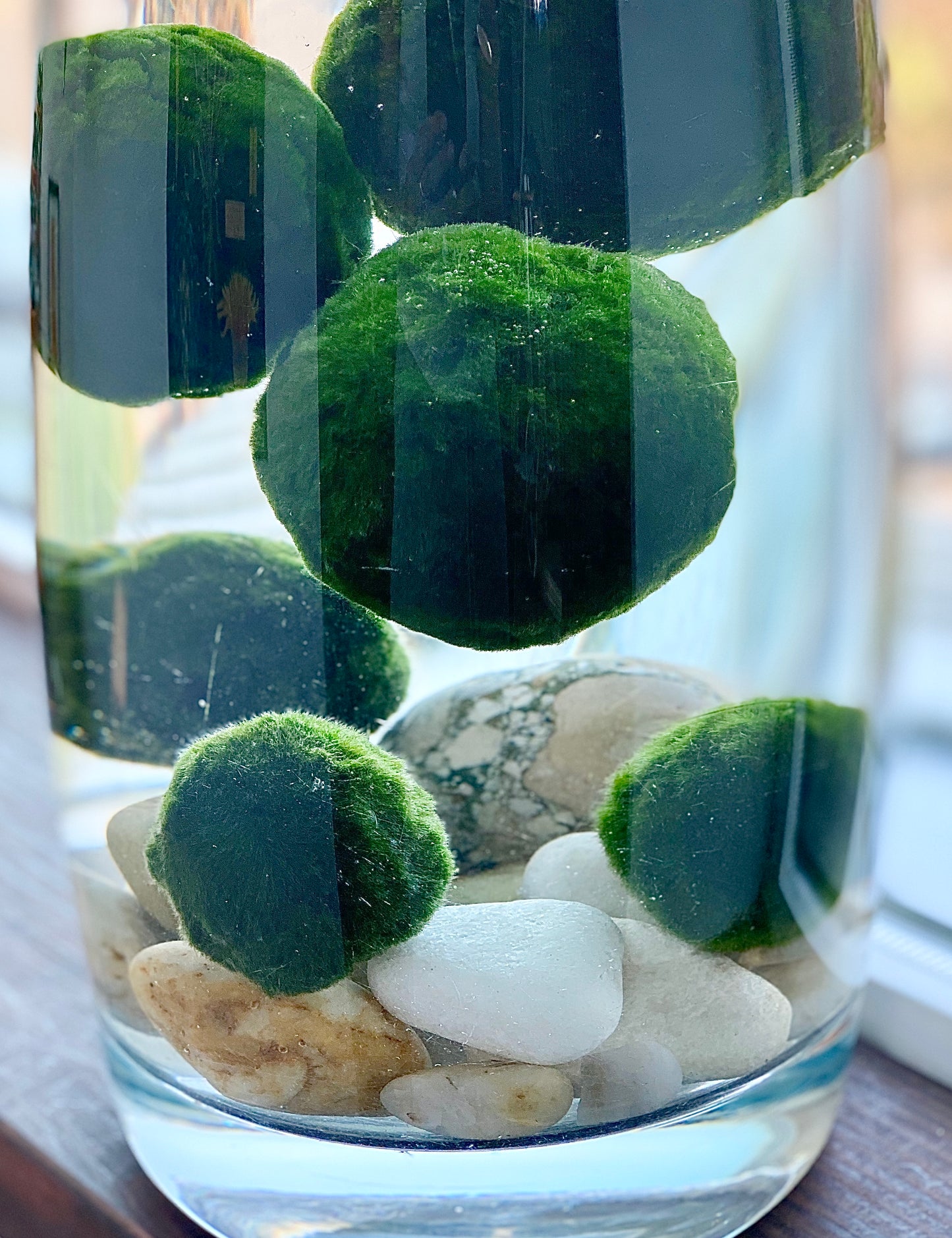
Excellent question, and one we get ALL THE TIME!
So let’s dive in.
Marimo are a unique spherical algae found in fresh and brackish, cold water lakes and rivers throughout the world. They move, sink and float for a few reasons: photosynthesis, the circadian rhythm, water current, and also to move away from too much sunlight.
Photosynthesis
They photosynthesize to harness energy from the sun to grow. Oxygen is released as a byproduct of photosynthesis and tiny air bubbles lift and keep the balls on the surface of the water where they occasionally gather light energy from the sun. The bubbles are stuck to the surface layer of the filament. Algae filament is what marimo are made up of, picture a ball of yarn but with tiny algae strands wrapped round and round instead of string.
In recent studies, we’ve learned oxygen isn’t the only thing that makes these algae orbs buoyant! Like plants and animals, Marimo respond to the circadian rhythm.
What is the Circadian Rhythm?
Have you seen our time lapse videos? Over the years we’ve shared dozens of videos highlighting the movements of plant life that goes unseen in our day to day. Those houseplants are grooving to the circadian rhythm beat! Oxalis, maranta, monstera and calathea are all beautiful examples of how forces of time and light affect us all.
In animals, the circadian rhythm is the internal process that regulates our sleep-wake cycle. This cycle generally repeats itself every 24 hours. In plants (and algae), the circadian rhythm communicates the season, time and temperature of their surrounding environment. It also signals when plants need to flower for the best chance of attracting pollinators and therefore, to survive as a species.
Other movements
Surface currents in their natural environment play a huge role in moving and shaping marimo too. As the water moves it gentle spins the algae orbs round like a dance!
Marimo also locomate around by excreting something called mucilage (a clear, slimy substance). They generally do this to move away from too much direct sunlight. That’s why we recommend keeping marimo in your home out of any intense, direct sunlight and in a filtered light location instead. If you notice a clear sliminess to the surface of your marimo water, now you know why!

So why do Marimo not sink or float in my home?
That’s where things become a little bit trickier to understand. In nature, Marimo adjust to the natural rhythm of day/night light cycles. The sun comes up and they may rise with the sun while photosynthesizing, the sun goes down and they sink again to rest on the sandy lake or rocky river bed.
However, in our homes, we turn lights on and off throughout the day and into the evening, which confuses the natural day/night signals and therefore effects how and when Marimo sink and float.
We've been curious to see if we could capture those sneaky movements to understand this concept better. In our most recent time lapse video, we kept an ambient LED light on in the background during the entire 12 days of filming. We weren’t sure how the Marimo would react but were thrilled to witness how capture Marimo indeed rose and fell a few times! We did add water to the vase one of those times, which increases oxygen levels in the water, but that doesn't account for the other two times we captured it surfacing! We'll add a link at the end of this post so you can see it too!
Did you know we created a digital natural science lesson featuring Marimo? We wanted to encourage more connection with nature and less screen time for families stuck at home. The first lesson is free!
Hope this helps explain why your Marimo may hang out at the bottom of the vase. That's right friends, you are not doing anything wrong if your Marimo don't float! If you want to experience more floating Marimo moments, you can change out the water more frequently and give your Marimo a gentle hug with two hands to clean and release some excess water before replacing it into the clean water. You can also add carbonated water to the vessel a few times a month to increase CO2 levels! We have a wealth of tips and tricks for you in our Community Resources pages here on our website too!
